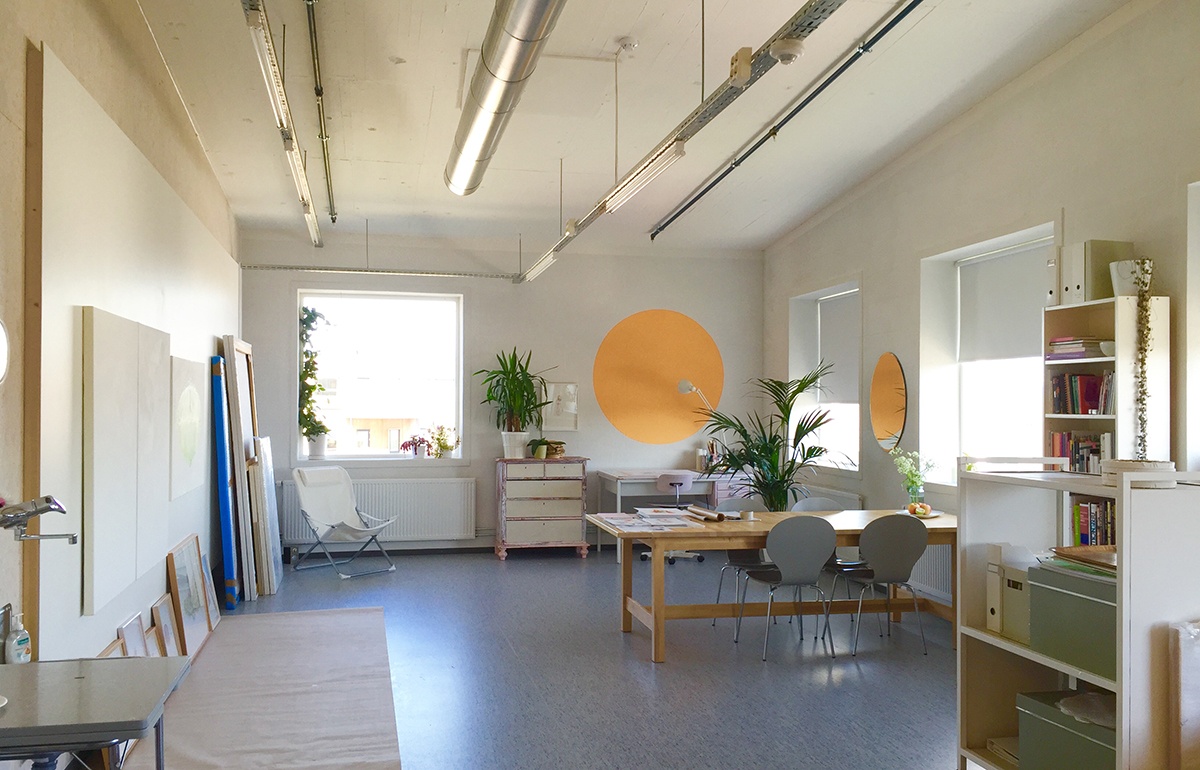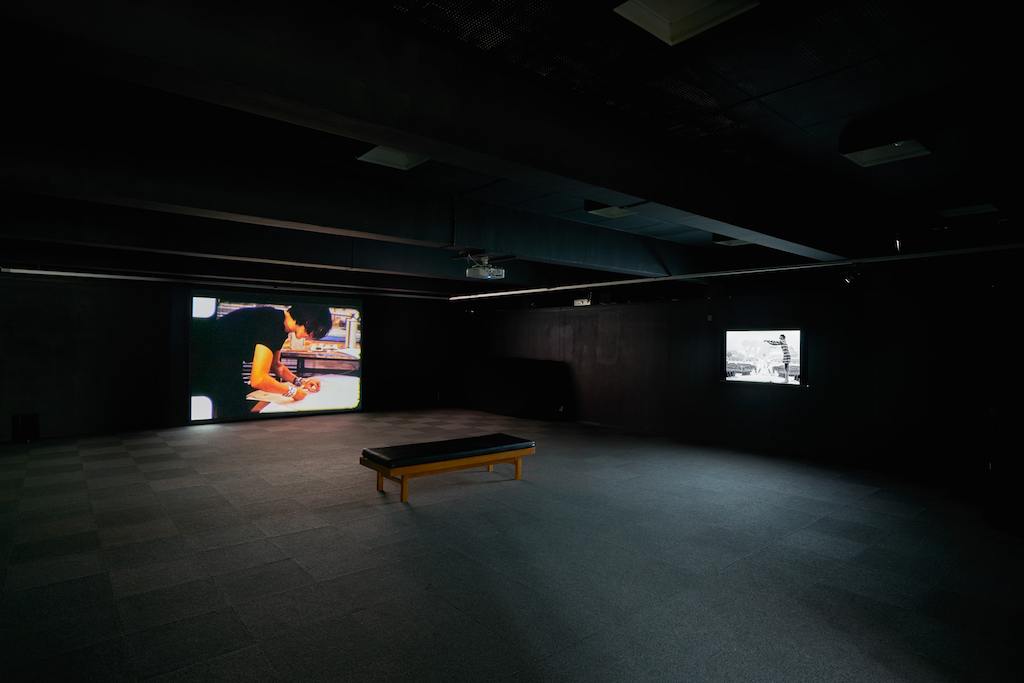I approached my CAS residency last June with a superficial knowledge of contemporary art 1
- I’m going to preface straight away that what I’ll be addressing throughout is the admittedly porous and hard to define “contemporary art” scene specifically. For the purposes of this article, this is distinct from other cultural outputs such as concerts, theater, cinema, street art, and graphic design, and makerspace art, which have varying degrees of gender representation among them.
These anecdotal observations are borne out by data - for example at the Atelierhuset Tou Scene studio complex there are currently 31 artists, only four of which are men; male artist association membership in Rogaland as a whole is approximately 35%. This came as a surprise to me, in my experience, in the US and elsewhere, contemporary art institutions (which are themselves more frequently led by men, though this is gradually improving), 2
- Association of American Art Museum Directors, “The Ongoing Gender Gap in Art Museum Directorships,” 2017.
- National Museum of Women in the Arts, “Get the Facts.” Data from 2014 https://nmwa.org/advocate/get-facts
The systems are not exactly comparable: the US has far fewer truly supported studio systems or Artist Associations than Norway, and far less support for social welfare–elements that factor in crucially in supporting artists of any gender, but especially of women. Putting this aside, I wanted to find out more about why Norway’s fourth largest city had achieved much more than parity, and in fact even an imbalance of women artists and cultural producers. What follows is a brief exploration into some of the reasons behind this phenomenon, many of which may be fairly obvious to a local readership, I must admit, and a few impressions and speculations on how this plays out for artistic production and exhibition. These include insights from several of the people I met with during my brief time there, who have experiential knowledge of and critical input on the workings of contemporary art in Stavanger.

It would be impossible to discuss gender distribution in contemporary art without addressing two components that affect the production and circulation of art just about anywhere: money and patriarchy. But while these elements often lead to fewer visible female-identified artists, in Stavanger, the reverse may be true. One reason for this is, as artist Ingeborg Kvame explained to me, “in Stavanger cultural capital is far less valued than economic capital.” The relatively new money circulating as a result of the oil boom leads to a trend towards more conspicuous consumption, away from desiring distinction in purchasing contemporary art or being visible in its scene, as a donor or attendee. In his recent exploration of the popularity of street art in the city, 4
- “Atlas Stavanger,” Art in America, November 2016
I did however observe, in the mass of new buildings adjacent to the Tou Scene Complex, what appears to be Stavangers rising “creative class” of designers, builders, and coders - one that upon further research is growing faster here than much of the rest of Norway. 5
- Irene Tinagli, “Norway in the Creative Age,” Report commissioned by Statens vegvesen Region Sør. June 2012

And here, we see instead an opportunity for women to fill in an occupation not currently regarded as appealing by men, who still hold the majority of the economic capital and social agency even in this prosperous city, in a country that has gone to some lengths to consider the professional desires of women. As a local artist reminded me, making it in art tends to be an occupation of “going all in” and men still have more options to do that, both because of sexism and the ongoing expectation of women to care for children and home. Many people I spoke with noted that male artists from Stavanger often move to larger cities in Norway, to Oslo and Bergen, where gallery representation is still dominated, if not as starkly as in the past, by men. Or they move even further afield to international art hubs. Despite artist association membership outside of the larger cities favoring women, the more prominent galleries of Oslo and Bergen have a gender dynamic closer to those of the US.
In a local community where contemporary art is less valued and sexism maintains a hold – but where there is a measure of wealth and financial stability – there potentially opens a double-edged opportunity for women artists and cultural producers. Without as many men competing in the local scene, what support there is can be used by women, whether as artists themselves, or to use that agency to bring less obvious international artists, curators, and critics into the local fray. Marginality is also a weapon in the fight against marginality. It might be that the percentage of women represented, whether as artists or curators, reinforces an environment more conducive to supporting female artists. As artist Siri Borge told me, “the reason I’m here is partly because of the abundance of women in the art scene. It does have its benefits. Sisterhood and all that.” This is not to paint a picture of total camaraderie, or to overstate an idea of community brought about by gender alone – the city is not without its art scene antagonisms, which any local reading this will surely acknowledge.
As this scene built by women grows, and Stavanger becomes more important as a location for the production and exhibition of contemporary art (which to me seems like something of a slow inevitability, as long a the oil is there, and as long as Norway itself plays a more prominent role in showcasing international art and exporting Norwegian artists) even as the contemporary art market in Stavanger grows, there is an already established system of women taking charge. It seems possible that with a particular combination of characteristics, there could be a local insulation from the increased inequality that commonly attends that growth. There are unique possibilities in not rushing to the center. Reporting from New York, I’m saying: nurture this.
*With thanks to the many Stavanger artists and curators who fielded my questions in researching this piece.
Rachael Rakes is a curator, critic, and teacher from New York. Currently based in Amsterdam, she is the Curator and Manager of the Curatorial Programme at De Appel. She is also a programmer at large for the Film Society of Lincoln Center, a screening committee member of Cinema du Reel at Centre Pompidou, and an editor at large for Verso Books. Rakes was an editor for the Brooklyn Rail from 2011-2017, and has recently contributed criticism to Art-Agenda, Artforum, and Ocula. She has organized exhibitions for Art Center/South Florida, A.I.R. Gallery, The Knockdown Center, ISCP, Malmö Konsthall, and the Hessel Museum of Art. From 2010-2013, Rakes was Assistant Curator at the Museum of the Moving Image. With Leo Goldsmith, she is at work on a book on radical filmmaker Peter Watkins, which received a 2014 Creative Capital/Warhol Foundation Arts Writers Grant. Rakes is a graduate of the Center for Curatorial Studies, Bard College, and recently taught a critical history of socially-engaged art at The New School, and a course on documentary aesthetics in contemporary art at Harvard Summer School. She has recently been a Curator in Residence for the CPR: Mexico program, an Arts Writer in Residence for Contemporary Art Stavanger, an MFU fellow with BHQFU and ArtCenter/South Florida, and a Workspace Resident at Squeaky Wheel Media Arts Center in Buffalo, NY.


